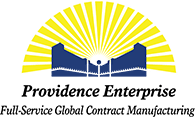Winning Speed-to-Market Race: Ten ‘Must-Haves’ for Medical Device Manufacturers
Worth nearly $450 billion in 2019, the global medical device market is expected to break the $670 billion mark by 2027. In spite of such healthy growth, those who want to capture a decent share of the market need to start early and hit the ground running.
What’s the rush?
The market may be huge, but so is the competition. Imagine a race but with a marathon-number of runners. The closer to the front, the greater your market share. Being first also reflects positively on your brand; in any competition everyone remembers the winner and are more likely to bet on them in the future.
If the perks of being first aren’t enough, consider the downside to late market entry. Today’s customers wait for no one. If someone else is offering a similar product – especially one necessary to get well or manage an illness – customers will take what is immediately available. Even if yours has superior features, how likely are customers to ‘trade-up’ on a medical device that serves its purpose?
A market that shrinks progressively the longer you delay means it takes ever longer to achieve your ROI. Note that delays have already added to your sunk costs; the longer your device remains at development stage, the more you are paying for a product that has yet to earn you any money. On top of that, first-to-market manufacturers set the price that everyone else has to match or, more often, beat. The last thing any manufacturer wants is for someone else to control their pricing.
It is no wonder that even the announcement of a product delay has been found to lower shareholder value by 12 percent.

Know where you’re going
Nothing adds time to your journey like a wrong turn… except travelling on for hours before you realise you made a mistake miles back. Make sure you have a solid roadmap with clear signposts along the way so your team knows it is always on track.

Keep products simple
You don’t have to “innovate” the wheel. More than 25 percent (and as much as 45 percent) of money spent on a product provides no value to either the product or the customer. While there may be dozens of features you can add, stick to the ones that fulfil expectations.

Take smart shortcuts
Know how to identify smarter, faster options. For instance, instead of re-designing each part, check whether there are readily available components which can perform the same function.

Know where speed is not the best option
You can compromise on bells and whistles, but never on quality. Cutting corners may get you there faster, but a sub-par product could result in recalls and unrepairable damage to your reputation.

Put the best people in charge of each task
Trained athletes can traverse an extreme obstacle course as quickly as the rest of us can cross a street. The fastest, surest way to speed your product through design and production is for each person on the team to be the best person for the job.

Communicate
There needs to be clear communication at every phase of the product’s lifecycle. If there are any misunderstandings, or if vital information goes unheard, going back to the root of the problem and fixing it can cause major delays.

Collaborate
It is simple physics: Things move faster when all forces pull in the same direction. It takes a big and diverse team to bring a medical device to market. Draw on everyone’s strengths and make sure they all align their efforts toward the ultimate goal.

Document
Medical devices are often held up by lengthy approval processes. By providing detailed records upon request, you make the job easier for regulatory bodies to move things along.

Be nimble
If requirements change, how quickly can your team pivot to find and incorporate the best alternative? If a component suddenly becomes unavailable, what are your options? Will your entire supply chain be held up for months because you can’t procure a one-dollar part?

Bet on a winner
More than half of medical device and pharmaceutical companies in Europe and the US consider speed-to-market a priority. If you do not have all the resources and capabilities to get your product to customers before the market becomes saturated, get assistance from someone who can.
A contract manufacturer (CM) prepares you and the road ahead, removing obstacles that slow other companies down. Want to make sure your design is right from the start? Check with your CM. In need of a supplier or technical expert? Your CM can find them. Can your CM ensure optimal communication and collaboration, help you identify the highest value features for your product and keep records that will hasten the approval process? Yes, yes, and yes.
Your CM’s dedicated team works with you to create a roadmap, keep track of progress and make sure everything is within scope. Your CM partner is as agile as they are experienced – they have contingency plans for any event.
There is a reason medals are only awarded to the first three places. There is also a reason the public only remembers who took the gold. If you are confident you can make it on your own, great. If not, team up with a trusted CM partner who is sure to speed you to the finish line.
Would you like a copy of this post to share?
Other Featured Resources
About Providence Enterprise
Providence Enterprise is a Hong Kong medical device contract manufacturer of Class I and II medical devices with manufacturing in China & Vietnam. We specialize in electro-mechanical assemblies and high-volume disposables. We are FDA registered and ISO 13485, ISO 14971, ISO 14001, ISO 27001 certified. Our capabilities include fabricating tooling for silicone rubber and injection molded plastics, clean room injection molding, electronics, clean room assembly, and sterilization.















































